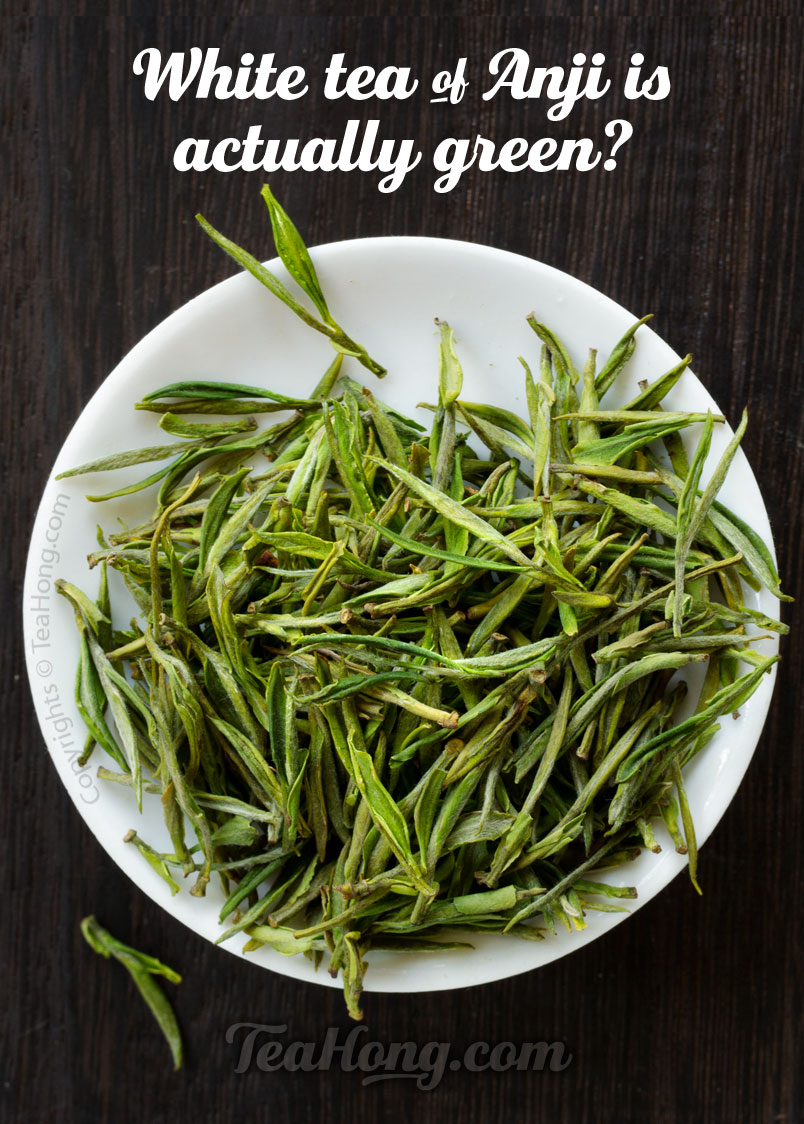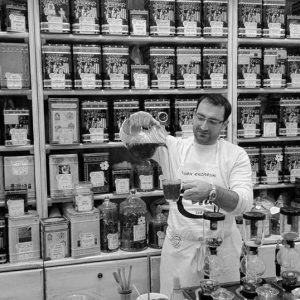Traditional Oolong Production: A Showcase

Tea trees survived a few hundred years through the traumatic history of China can still be quite productive in this region. Some are prized for the unique tea flavour they are capable of, though they are definitely not the most efficient trees to produce from. The leaves from such trees are not to be mixed with those from another tree during processing or in sales. In another word, they are to be sold as the product from each individual tree, hence the term Dancong, i.e. Single Bush
The production of oolongs varies from one region to another but the most traditional approach seems to illustrate best the characteristics of the governing concepts behind all variations. This article describes the production of Fenghuang Dancong ( fèng-huáng dān-cōng 鳳凰單欉 ), aka Phoenix oolongs, the most ancient form of oolongs production practiced today.
cultivars
Two major groups of cultivars used in the Phoenix area today are Shuixians and Wulongs (1). The former yields most of the popularly available Phoenix selections so we shall talk about it here, and leave the latter to another piece of writing.
Shuixian in Chinese actually refers to Chinese Sacred Lily (Narcissus tazetta), a sweetly fragrant small white flower customarily displayed in the household during Chinese New Year. Its cleansing aroma is one of the best-loved delights of the festival. The flower name is borrowed because the tea made from these tea plants do have that similar kind of aroma. Actually in the last hour of the fermentation stage in production processing, the aroma is so intense that you would think you were totally submerged in a sea of blooming lilies.
The progenitor plant, a wild tea plant called “Hong Yin”, still grow in the wild in this area and a few producers are still making tea from it. Some scholars believe that the “She” tribe 畬族, an indigenous mountain people, was first to employ it to make tea in the oolong approach over 1,000 years ago.

The plucking for oolong is very different from that for green tea. In Phoenix (Fenghuang) where the oldest form of oolong is practiced, specification for plucking is very straight. Here the plucker select only well-open young leaves and do not touch the younger ones. These are left there to grow to support the health and sustainability of the tea bush.
The last known audit in 2000 says there are over 80 Shuixian cultivars used locally. Since the growth rate and budding time differs quite dramatically between cultivars, plucking for first flushes can be spread from end of March to late May. This is good for the farmer because he can time his production focus across a range of different cultivars, minimizing the scale of his labour force and hardware setup. This is critical to enable these small family run tea production farms to continue operating in the economically reasonable fashion that is. Almost all producers in premium production areas are such small farms.
These great number of plant varieties produce 18 styles (2) of Phoenix Dancong (3) teas each with various quality selections of individual nuances.
plucking and sun-withering
Better quality Phoenix is usually plucked on a sunny day just before or immediately after midday. When there is good sun, the young leaf cells expand fully, and the leaf face is glossy, plump and healthy, and free of dew. Leaves plucked under such conditions retain the most sap needed for the taste and aroma producible through the lengthy traditional oolong production process. This practice is very different from that of green teas, such as “Dragon Well” ( i.e. Longjing ), which requires the leaves to be extremely young and fresh, and tender during early morning Spring cool air. For oolongs, such as the Phoenix teas, the leaves have to grow to a certain size in order to be chemically optimized to deliver their maximum quality. That is why the spring harvest for green teas is usually a lot earlier than oolongs.

Laying out the leaves to sun. One hour would be ample when the late April afternoon sky is clear and bright. More when there are some clouds. The tea won’t be so good when it’s cloudy.
The plucked leaves are very thinly spread out on flat bamboo sieves to wither under the sun, and are turned over a couple of times to allow even ventilation. This step is likely to have taken from the ancient tea drying method, sun-baking.
Unlike the ancient method, in oolong making, the leaves are removed from direct light after 2~3 hours and are allowed to cool before being sorted ready for the next stages. This “liang qing” (i.e. airing of the green) process allows the leaves to re-hydrate and turn plump again for the next step.
fermentation
After the leaves have been cooled and sorted (usually after dinner time in these Phoenix villages where it gets dark quite early), they are to be partially fermented. The process takes place throughout the night for a duration between 7 to 9 hours, during which time the tea master has to rattle (4) the leaves briefly for about 5 minutes at regular intervals of one and a half to two hours, each time gradually increasing the vigor of the process.
This “rattling” of the leaves causes the edges to rub against each other, thus gradually breaking the cell walls and triggering a series of chemical reactions as the plant enzymes and other leaf constituents (such as protein, amino acids, polyphenols, carbohydrates, etc) come into contact with each other. The result is visually evident when a thin reddish rim begin to appear in the leaf. Somehow, the West has called this oxidation process “partial-fermentation”. The locals call it “zao qing”, making of the green.

Old Wen, the tea master and grandfather in this small tea farm, stays up all night “massaging” the leaves for controlled partial fermentation. Although most gardens are now equipped with bigger drum rollers for the zao qing stage, finer grades are still always hand-processed, to maximize quality, and therefore the price these farmers can demand.











Thank you for a very good question. People do sell what they have right away to guarantee cash flow. And there are those who are eager to get the tea as fresh as possible. Some people pay directly to the farmers for the mao cha which they do not know there is still processing needed. So you get the idea.
Only very traditional dealers with the knowledge would do the proper post-mid-autumn bake. Firstly, it is against the Mainland China mentality to not make money while you the goods. Secondly, it takes care and skills in the complete process. Not many people still have them.
All harvests of Milan Xiang of respectable quality are only from Spring, and not summer or autumn. That means if you get a batch of it during autumn and the dealer tells you that it is freshly produced, either it is a lie or it is of poor quality. Or both. In Wudong or other famed regions in Phoenix, they only harvest once a year for Milan Xiang.
Great article, thank you! I didn’t know about the mid-autumn finishing bake for Milan Xian (my favorite of oolongs). Do the farmers keep this tea for half a year, or may sell it in spring/summer with just one finishing bake? And if it’s the latter, then does a summer batch of Milan Xian not retain its taste for as long as the autumn batch that have undergone the second finishing bake?